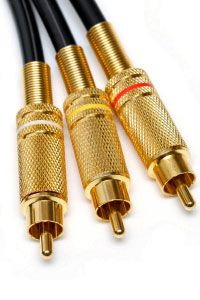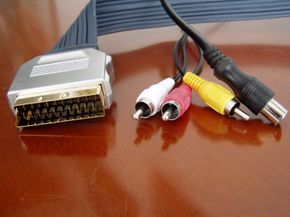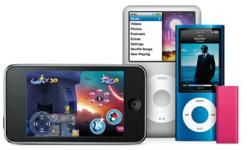There are a handful of cables that transmit both audio and video signals. For years, coaxial video cables were one of the only choices for connecting video components. Coaxial video cables have that famous one-pin connector, sometimes called a stinger, that can either be pushed or screwed into place. Coaxial video cables are now mostly confined to outside connections, such as satellite TV or cable TV lines that come through the wall. A single coaxial cable carries both video and audio signals.
HDMI cables are an updated version of DVI. HDMI cables were also designed for use with HD components, but their connector is much slimmer, like a large USB cable. HDMI also includes HDCP copy protection. Manufacturers of HDMI cables tend to advertise their product as the only choice for connecting HD video components, but that's not true. DVI cables work equally well. However, if you're using an analog TV, all three work equally well [source: Cobalt Cable].
In Europe and the UK, the most popular dual-purpose cable is called SCART (Syndicat des Constructeurs d'Appareils Radiorécepteurs et Téléviseurs). SCART cables have fat, 21-pin connectors. In Europe, SCART cables do the work of RCA analog audio cables as well as composite, s-video and component video cables, but they can't carry high-bandwidth digital video or audio signals, such as those necessary for high-definition TVs. HDMI is the preferred cable in Europe for HD components.
FireWire, or IEEE 1394, cables are mostly associated with connecting devices to computers, but a few high-end home theater receivers and HDTVs now come with FireWire ports. FireWire is capable of carrying compressed MPEG-2 video and digital audio. You might use a FireWire cable to connect a digital video camera directly to your home theater system to show off some unedited footage.
To sum up, here are the cables that you would use for some common home entertainment systems.
Home stereo system (CD changer, stereo receiver, speakers):
- Lower-end: If you're playing regular CDs or MP3s, you'll only need RCA analog audio cables and speaker wire.
- Higher-end: If you want crisper digital audio, go for optical or digital coaxial cables and thicker speaker wire.
- Highest-end: If you want the unparalleled sound of DVD-audio in full surround sound, you'll need special DVD-audio cables and 12-gauge speaker wire.
Home theater system (Blu-ray player, DVD player or VCR, video game console, home theater receiver, TV, speakers):
Home theater system (Blu-ray player, DVD player or VCR, video game console, home theater receiver, TV, speakers):
- Lower-end: If you have an older standard-definition TV and mostly use your system to watch regular DVDs or VHS tapes, then you'll do fine with a composite video cable bundled with RCA analog audio cables.
- Higher-end: For a newer standard-definition TV, you should really upgrade to component video cables. RCA cables will still do fine for audio.
- Highest-end: Once you enter the world of high definition, you'll need to use either component video cables or one of the two copy-protected options: DVI or HDMI. You'll also want to invest in thick-gauge speaker cable to make the most of your surround-sound system.
For more information on home audio and video systems, follow the links on the next page.




